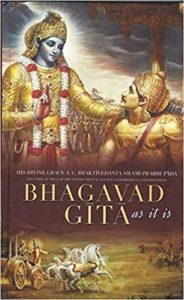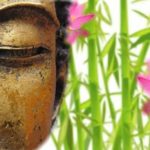In this paper I will attempt to compare and contrast the two works, “What the Buddha Taught”, which is based on the Pali texts of Tipitaka, and the “Bhagavad-Gita-The Song of God” by beginning with Buddhism for the first and every other paragraph thereafter, then continuing with Bhagavad-Gita for the second and every other paragraph thereafter. I am hoping this will help maintain a clear understanding of the comparisons I am making to each work throughout the paper.
Why Buddhism is Unique?
 Buddhism is unique to every other religious belief because Buddha was a man who did not claim to be a God, nor a son of God. His teachings only claim is that man and the only man can liberate himself through the impermanence of Dukkha and find ultimate happiness in his life. His own life on earth was said to be as a Buddha living a life of “par excellence.” He was referred to as a Supreme Being. It is through his life experience and wisdom that he promises to show us the path to Nirvana.
Buddhism is unique to every other religious belief because Buddha was a man who did not claim to be a God, nor a son of God. His teachings only claim is that man and the only man can liberate himself through the impermanence of Dukkha and find ultimate happiness in his life. His own life on earth was said to be as a Buddha living a life of “par excellence.” He was referred to as a Supreme Being. It is through his life experience and wisdom that he promises to show us the path to Nirvana.
The writings were originally done in Sanskrit, but they are what the Buddha taught and how the Buddha lived and why millions of people practice Buddhism today and millions more will tomorrow. Bhagavad-Gita is also translated from Sanskrit, but is a religious doctrine of prose and song. It speaks of God being in all things as Brahman and inside each of us as Atman. Arjuna is the student and Krishna is God in a form Arjuna can see and hear. Bhagavad-Gita is a spiritual guide that is meant to show the impossibilities of judging thy neighbor because each of us can be faced with choices that are very hard to make and would not be able to explain to someone else.
Still, it tries to show that as long as the choices you make are not based on greed, or evil and is a battle meant to be won for the good of mankind, then in the eyes of God, it is a battle worth fighting for. The Gita is an astonishing work that appeals to all religions and all cultures which is something that no other book can claim to be able to do. Many great men have used it as their spiritual guide, like Gandhi, and say that there are passages within it to help a man when he is struggling with difficulties in his life. The Gita teaches us about the Supreme Reality and tries to teach us how to break the chains of desire which bind us to our actions.
The 5 Aggregates
Buddhism teaches us about the five aggregates, the first aggregate of matter, the second of sensations, the third of perceptions, the fourth of mental formations and the fifth of consciousness. The first aggregate is the most important because it also contains the four great elements which are solidity, fluidity, heat, and motion. It also contains the derivatives of the four great elements which are the five material sense organs which are the eye, ear, nose, tongue and body and their corresponding opposites in the external world which are visible formations, sounds, odors, tastes, and tangible things. Thoughts and ideas of mind-objects are also included here.
The reason all of these are so important is because all aggregates of matter play a role in each of the remaining aggregates. Aggregates of sensation, perception, mental formation, and consciousness all respond to the aggregates of matter that make up each of our realities. It is when we learn about the aggregate of consciousness that we begin to see the shift from religion to Buddhism. Buddhism says there is no Atman or soul as religious doctrine preaches. There is no permanent self. There is only a stored consciousness that feeds our ego of self-importance. Buddhism tries to teach us to let go of the aggregates of matter and see everything as impermanence. You find this awareness through repetitious meditations that bring you closer to each session. Learning to focus on each day as it comes and using self-control you learn to live your life with complete happiness.
The Gita uses the Vedas to teach us about the three Gunas which are Satwas, Rajas, and Tomas. Satwa is light or clarity, Rajas is Energy or movement and Tomas is inertia or heaviness. They are considered as strings that vibrate and they make up our material existence. All of us are made of these of three Gunnas and the elements that remain the same from birth to death is what make up our identity. The Gita says we must be free from the pairs of opposites and poise our mind in tranquility. It tries to teach us how to do our duties always without attachment.
Buddhism teaches us about the four-Nobel Truths which are Dukkha, the Arising of Dukkha, the cessation of Dukkha and the way of leading to the cessation of Dukkha. The way of leading to the cessation of Dukkha is to follow the Nobel 8-fold or Middle Path in the search for happiness. That is to know you have the right understanding, right thought, right speech, right action, right livelihood, right effort, right mindfulness, and right concentration. By using 4-stages of meditation that begin with the body, then feelings and sensation, the mind and then moral and intelligent subjects you will find Nirvana.
Bhagavad-Gita A Story of War
Although the Bhagavad-Gita is a story about war, it is trying to say that every warrior that has died on a battlefield has considered that as the death of honor. Krishna teaches Arjuna that even though he is about to go commit evil acts against the enemy if he doesn’t the people that know him will think he was a coward and did not live up to his sense of duty. He says that the enemy he is fighting has brought him to this crossroad and has not left him with a better choice. He says no one will live forever, but if you die now, God will accept you in His Kingdom and if you conquer you will live the rest of your mortal life as a King here. It is because he is not fighting only because he wants to be a King and is instead fighting because of the way this King is treating his people that he deserves the throne. He has renounced attachment from the fruits. Mainly, Krishna argues he cannot gain freedom from activity by abstaining from the action on the battlefield. Here we learn that we can find peace in Atman. The Gita says we must learn to be established in the consciousness of Atman, always.
Of all the differences I have listed there are still many similarities between the two works. They both try to teach us not to become so attached to the material world around us. They say the more you let go of the material world around you, the happier you will live your life on earth. If we give in to our desires, whether that be sex or greed, we only allow ourselves to suffer more and will never truly know complete happiness.





